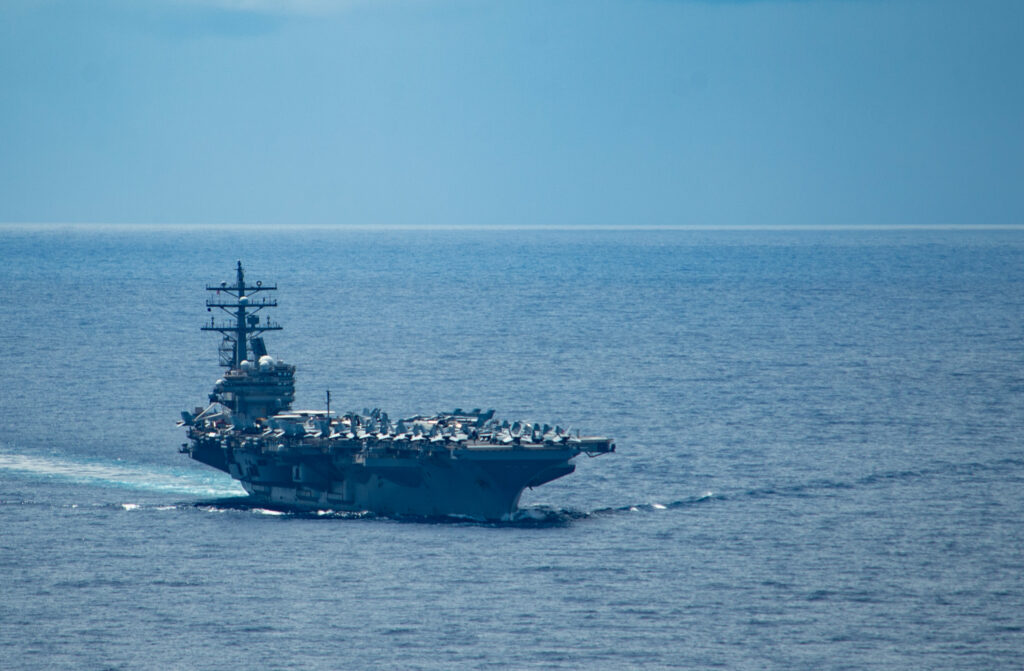
WASHINGTON — The U.S. Navy’s carrier air wings lack some of the characteristics needed to counter China in the event of a conflict, two naval analysts said in a webinar.
Bryan Clark, senior fellow and director of the Center for Defense Concepts and Technology at the Hudson Institute, and Timothy Walton, a senior fellow at the center, discussed in a July 12 webinar their report “Regaining the High Ground Against China,” which presents their case that carrier strike groups are challenged by Chinese long-range missile threat and will need a longer-range carrier air wing to affect the battlespace.
The Chinese missile threat could force carrier strike groups to operate at ranges of 1,000 to 1,500 nautical miles away from China, reducing or negating the range with which carrier-based strike fighters could strike hostile forces, Clark said.
Clark noted that the carrier air wing is not set up for combat at sustained ranges and the U.S. Navy is “going to need some way to extend the range of the carrier air wing.”
The carrier air wing’s strike fighters, the F-35C Lightning II and the F/A-18E/F Super Hornet, need aerial refueling to operate at extended ranges. The forthcoming MQ-25A Stingray aerial refueling UAV will enhance the ranges of the strike fighters, relieve some Super Hornets from aerial refueling duties and provide a platform for sensors.
Fleet air defense also has become a capability demanding more attention in view of the Chinese missile threat. The F-14 Tomcat fighter and its Phoenix air-intercept missiles, designed during the Cold War to counter Soviet bombers carrying cruise missiles at long ranges, were retired from the fleet in 2006 and the F/A-18 and F-35 do not have a similar long reach. Clark said the CSG needs a layered defense.
“We need to regain the ability to attack bombers before they can launch their missiles,” Clark said.
He advocated the use of electronic warfare in a more offensive way, including the use of UAVs to confuse enemy defenses. This would involve shifting away from the EA-18G Growler electronic attack aircraft to long-range UAVs, even expendable ones.
The analyst said the Navy needs to change the way it conducts airborne early warning and intelligence, surveillance and reconnaissance. Possible platforms include the MQ-9 Reaper UAV, stratospheric balloons and satellites.
Clark said the P-8A Poseidon maritime patrol aircraft would need to keep away from enemy air defenses and shift from an anti-submarine search and attack role to one of command and control of unmanned platforms and distributed ASW sensors.
A pdf of “Regaining the High Ground Against China” can be found here.






